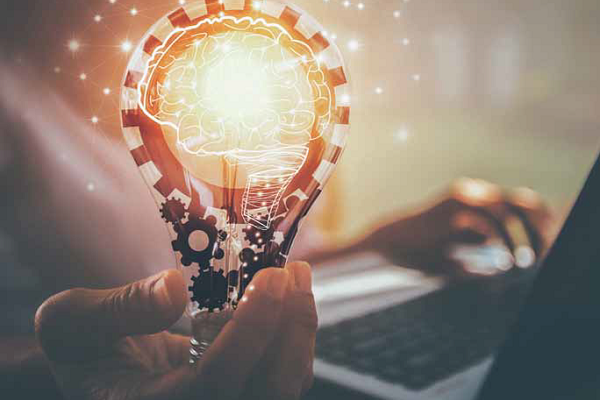What the future holds
In this digital age electrical power is essential for our lifestyles. Gary Busbridge outlines future business opportunities that need to be planned for now.
Steven Chu won the 1977 Nobel Prize in physics and was US Secretary of Energy from 2009 to 2013.
He is responsible for a great quote with a message that applies to the electrical industry today and into the future: “As the saying goes, the Stone Age did not end because we ran out of stones; we transitioned to better solutions. The
same opportunity lies before us with energy efficiency and clean energy.”
ADVERTISEMENT
Our Standards developers and your business should be thinking and acting on such opportunities.
If you are serious about your business, you need to get serious about energy efficiency. Not only will your customers love you for it, there is also a possibility that it will put you years ahead of your competition.
The Australian Wiring Rules and the National Construction Code (NCC) will be aligning on this very topic into the future.
Let’s talk a little about the NCC. Most details within are derived from energy efficiency. Construction materials, techniques, lighting, lighting control, ventilation (the list goes on) requirements are all about energy-efficient practices.
Developers are always keen to improve the ratings of installations, whether residential or commercial. The reason is simple – it will convert to an increase in resale value. There is a scoping study in the market at present that seeks comment on the trajectory for low energy usage in residential buildings.
Zero energy usage by 2028, using off sets from renewables, is the aim of the NCC in this paper. If your business is
not using the NCC now, get your hands on the code and become involved. After all, it’s mandatory for residential and commercial developments – and it is free.
So now to the ‘soothsaying’ bit: what can we expect in the future?
One likelihood: installations using fully DC power for appliances in the home. For instance, think of the humble digital TV (not so humble anymore). All you have is one cable to the TV that carries power for the set and transmits the necessary signals for your viewing pleasure.
Why have an AC current feeding a converter to provide DC power for the appliance? Just power the device with
DC from your photovoltaic system or battery storage, cutting out the ‘middle man’. Villages in the Netherlands are experimenting with DC power supplies.
Have you considered battery storage as a feasible power supply? There is a new Standard (first of its kind in the world) for battery energy storage systems (BESS) – AS/NZS 5139. This should be published before the end of 2019 and provides all you need to know about BESS installation. This is a grand opportunity to give your customers more control of their power supply.
Will the home of the future be selfsufficient and provide power to the grid? Even in the suburbs, this is a distinct
possibility.
Combine BESS with electric vehicle (EV) charging and you may have that control. Already there’s a strong infrastructure of EV charging stations, although we don’t have many EVs on our roads.
Bear in mind that these charging stations have ‘smarts’, so there is communication between the charging station and the EV to ensure that the battery is not over-charged. But this is two way, as the EV battery can supply power to the installation. The mind boggles. And who is best to support this? The electrician – it is your world. If you think your head will be spinning, just consider the Internet of Things (IoT). Everything now is intrinsically linked through the internet.
Siri is already learning who you are, what you do and your preferences in life. Artificial intelligence is learning from
your smart phone, tablet and even the internet connection on your fridge. How your business operates in these realms is crucial for the future.
To take it even further, Power over Ethernet (PoE) is here to stay. Many devices in the home and business can be
powered by a relatively small DC current that can be transmitted through the data cabling.
Already, LED downlights can be powered in this way, but consider the evolution of this technology.
There are three categories of data cabling at present:
- ES1 – 60V 2mA DC maximum (within ELV);
- ES2 – 120V 25mA DC maximum (at the limits of ELV); and,
- ES3 – 400V 750mA DC maximum (considered LV).
This is now in the realm of the electrician. Where does data cabling finish and electrical work begin? It’s a vexing question for Standards and regulators, but watch this space.
Alternative power supplies are nothing new. However, these supplies will spread further and further into the domestic market as consumers look for ways of future-proofing their homes against disruptions in the grid supply.
Solar, wind-driven and diesel generator systems will shape this part of the market. Keep on the lookout to ensure that your business makes the most of the opportunities.
More and more we rely on electricity to power our lifestyles. Very few pieces of equipment don’t have electronic control in this day and age.
Consider what will happen if there’s a power failure. How do the vulnerable, aged, infirm and young cope with that?
If electricity is required, then it must be provided some other way.
Battery back-ups and generation of power are needed in standby mode. Who ensures this, and who maintains this?
These are substantial questions for your business, framing the very opportunities that exist for the electrical industry in future.
-
ADVERTISEMENT
-
ADVERTISEMENT


